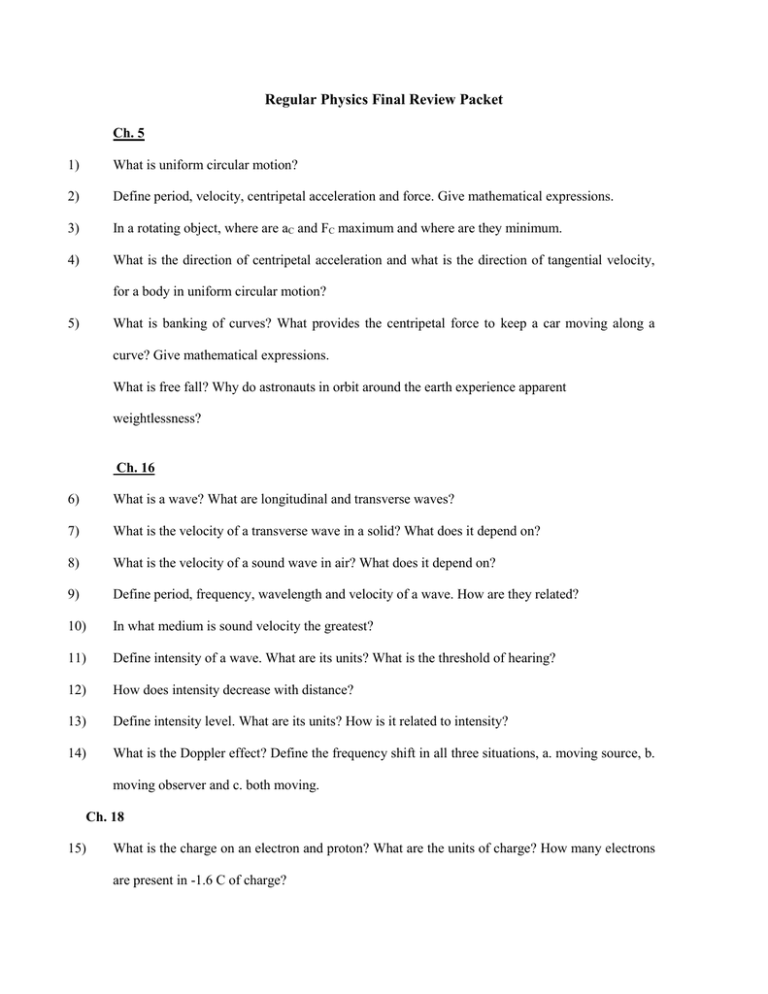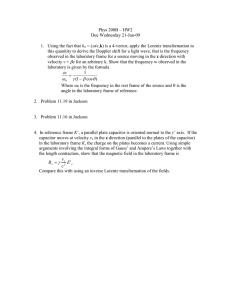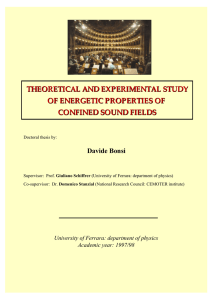Regular Physics Final Review Packet
advertisement

Regular Physics Final Review Packet Ch. 5 1) What is uniform circular motion? 2) Define period, velocity, centripetal acceleration and force. Give mathematical expressions. 3) In a rotating object, where are aC and FC maximum and where are they minimum. 4) What is the direction of centripetal acceleration and what is the direction of tangential velocity, for a body in uniform circular motion? 5) What is banking of curves? What provides the centripetal force to keep a car moving along a curve? Give mathematical expressions. What is free fall? Why do astronauts in orbit around the earth experience apparent weightlessness? Ch. 16 6) What is a wave? What are longitudinal and transverse waves? 7) What is the velocity of a transverse wave in a solid? What does it depend on? 8) What is the velocity of a sound wave in air? What does it depend on? 9) Define period, frequency, wavelength and velocity of a wave. How are they related? 10) In what medium is sound velocity the greatest? 11) Define intensity of a wave. What are its units? What is the threshold of hearing? 12) How does intensity decrease with distance? 13) Define intensity level. What are its units? How is it related to intensity? 14) What is the Doppler effect? Define the frequency shift in all three situations, a. moving source, b. moving observer and c. both moving. Ch. 18 15) What is the charge on an electron and proton? What are the units of charge? How many electrons are present in -1.6 C of charge? 16) Define electrical conductors and insulators. 17) What are charging by a. contact, b. induction, c. polarization? Are all three types of charging possible for both conductors and insulators? 18) What is Coulomb’s law? How does electrical force vary with distance? 19) Define electrical field. Give the mathematical expression. How is it related to the force acting on a test charge? 20) What is the electrical field in between the plates of a parallel plate capacitor? 21) Draw electric field lines for a. isolated positive charge b. isolated negative charge, c. electric dipole, d. two negative charges separated by a distance. 22) What is electric shielding? What is the electric field and total charge inside a hollow metallic charged conductor? Ch. 19 23) Define electrical potential energy and work done on/by a charge when it is moved thru a potential difference. 24) How do you find electrical potential? What is its unit? 25) How do you find the capacitance of a parallel plate capacitor? What is its unit? 26) What is the charge stored in a capacitor of capacitance ‘C’ and potential difference ‘V’. 27) If a dielectric of constant is introduced between a capacitor plates, how does its capacitance change. Ch. 20 28) What is Ohm’s law? 29) Define power in terms of voltage and current. Define Energy in terms of power and time. 30) What are the devices used to measure voltage (voltmeter) and current (ammeter) in a circuit? 31) How do you find equivalent resistance for series and parallel circuits?



